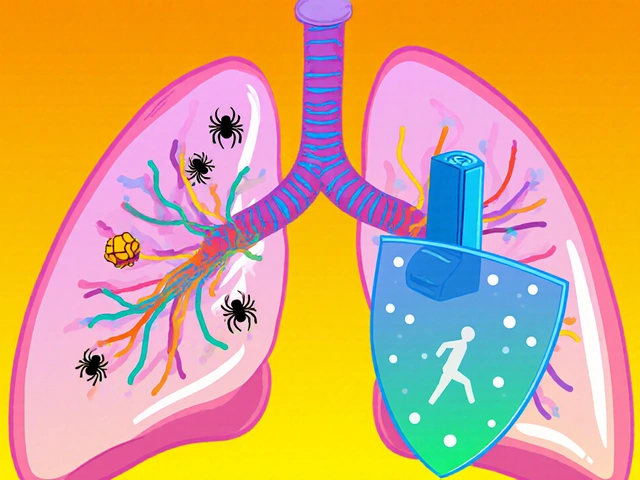Ampicillin and Gastrointestinal Infections: A Closer Look
May 29 2023Allergic Rhinitis Symptoms: What to Watch For and How to Manage
When dealing with Allergic Rhinitis Symptoms, the body's nasal lining reacts to airborne allergens, leading to a mix of sneezing, itching, and watery discharge. Also known as hay fever signs, these symptoms can flare up anytime the airflow carries pollen, dust mites, or pet dander. The condition is essentially an inflammatory response, so you’ll often feel a tickle in the throat, watery eyes, and that unmistakable stuffy feeling. Recognizing the pattern early helps you act before the day turns uncomfortable. Allergic rhinitis symptoms don’t just appear out of nowhere; they are linked to specific triggers, and understanding those links is the first step toward relief.
Key Triggers, Treatments, and How They Connect
One of the most common ways to keep symptoms in check is using antihistamines, drugs that block histamine receptors to stop the sneeze‑and‑run cycle. Antihistamines like Xyzal, known chemically as levocetirizine, are especially popular because they work fast and cause less drowsiness than older options. But no medicine works if you keep exposing yourself to the culprits. Common allergy triggers, such as ragweed pollen in spring, indoor dust mites, or cat dander, essentially fuel the whole reaction. By identifying and reducing contact with these triggers, you lower the load on your immune system. Nasal congestion, the blocked feeling in your nose that makes breathing tough, is a direct result of swollen blood vessels in the nasal passages; antihistamines and decongestants can shrink those vessels, clearing the airway. In short, the chain goes: trigger exposure → histamine release → symptoms like congestion, sneezing, and itching, which antihistamines aim to interrupt.
Beyond pills, practical steps can shave days off a flare‑up. Keeping windows closed during high pollen counts, using HEPA filters, washing bedding in hot water weekly, and showering after outdoor activities all cut down on allergen load. Nasal irrigation with saline solution flushes out irritants and moisturizes the lining, easing both itching and congestion. For those who need stronger relief, a short course of nasal corticosteroid sprays can calm inflammation, but they’re best paired with an antihistamine for full coverage. The articles below dig deeper into each of these angles – from a side‑by‑side look at Xyzal versus other antihistamines, to tips on buying safe generic meds online, and even broader health topics like managing chronic conditions that can worsen allergy symptoms. With this groundwork, you’ll be ready to scroll through the curated posts and pick the exact advice that matches your situation.
 27 Sep
27 Sep
Is Your Runny Nose an Infection or Allergy? How to Tell
Learn to spot the differences between an infection‑related runny nose and one caused by allergies. Get clear signs, simple tests, and when to seek help.
Read More...




